How to Make Protein Shakes Taste Better: 10 Hacks
Author:
Reviewed by:
(Certified Nutritionist, S&C specialist, M.Sc.Eng. Biotechnology)
Unlock your full potential by engaging with our experts and community! Have questions about your fitness journey or looking for expert advice on weightlifting techniques? Don’t hesitate — leave a comment below and Oleksandr Maksymenko will provide a personalized answer and insights to help you reach your goals.
Torokhtiy is reader-supported. Some links are affiliate links, and we may earn a commission at no extra cost to you. See our disclosure page for details.
Protein powder can be a convenient method to achieve your protein requirement, but some individuals may feel that protein powder tastes bad and not all powders have an appealing taste when consumed on their own.
In this post, we will explore some strategies for how to make protein shakes taste better, examine the reasons behind unpleasant protein powder tastes, and provide guidance on what ingredients are suitable or unsuitable to mix with protein powder.
How to make protein shakes taste better? – To improve the flavor and appeal of protein shakes, try to add milk or yogurt alternatives, fruits, flavored protein powder, sweeteners, spices, or healthy fats such as nut or seed butters. You could also experiment with using a blender with or without ice to create a smoother consistency.
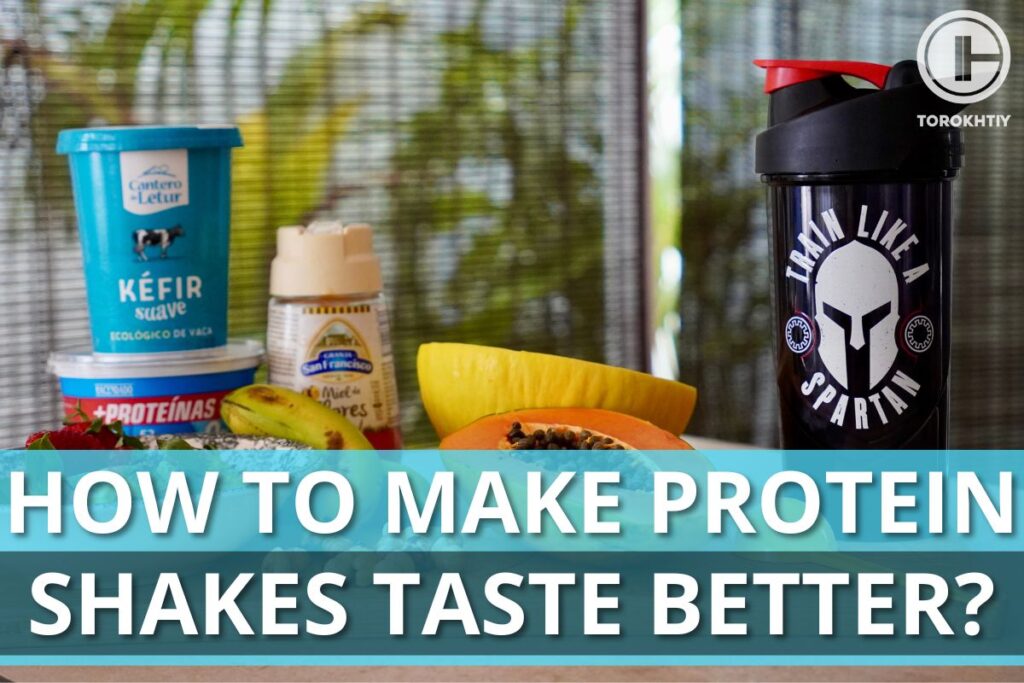
10 Hacks for Making Protein Powder Taste Better
If you can’t find any protein powder that tastes good to you there are a couple of things you can do to improve the taste. Consider changing up the liquid, or adding in a couple of extra ingredients. We’ve outlined our suggestions for a better tasting protein shake below. Try a couple of these ideas out the next time you mix up your protein to make it more enjoyable!
Our expert Sergii Putsov shared his favorite flavors with us:
“Choosing a protein powder is key to staying consistent with your supplement nutrition. Try a few flavors to find some that you genuinely enjoy and alternate them time after time. My favorite flavors are chocolate and coconut.“
1. Change The Ratio Of Protein Powder To Liquid Volume
Another common problem people have with their protein shakes is using either too much or too little liquid to the shake. Too much will lead to thin, watered-down consistency, while too little will lead to clumpy sludge. So, what’s the secret?
While it might take some experimenting, start by seeing what’s recommended on the product package. For most protein powders, they’ll recommend you mix 1-2 cups of liquid with 1 scoop. Give this ratio a try, and adjust from there. Once you find a ratio that works for you, stick with it!
Keep in mind that plant-based proteins often require more liquid for a good shake than whey protein, otherwise they turn out too thick and it hurts the flavor.
2. Use a Blender
This can mechanically help create a smoother and more enjoyable texture. Blenders are quick and efficient, making it easy to whip up a protein shake in just a few minutes. This is particularly useful if you’re short on time and need a quick and easy meal or snack.
They can be used to make a wide range of protein shake variations. Below we will cover some ingredients you can to create a customized protein shake that suits your taste preferences and dietary needs. You can also add ice cubes to make a refreshing, thicker, and creamier protein shake.
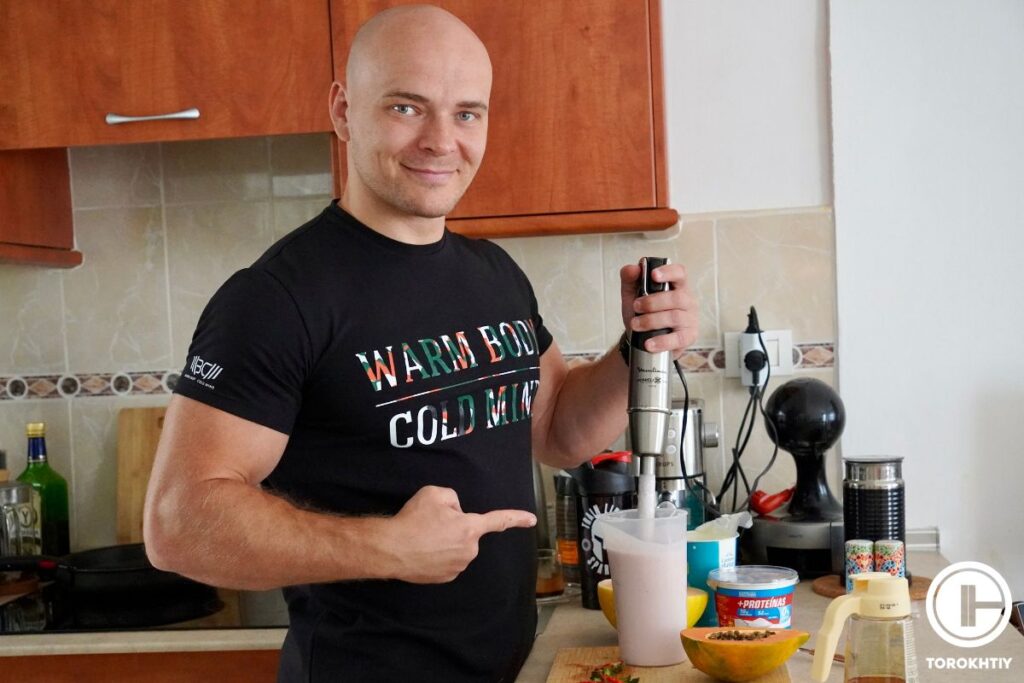
3. Choose a Flavored Protein Powder
Many brands of protein powder come in a variety of flavors, such as chocolate, vanilla, and strawberry. Experiment with different flavors to find one you enjoy.
4. Experiment With Base Liquid (Water, Cow’s Milk, Plant-Based Milk, Etc.)
The first thing you should try if you don’t enjoy the taste of protein is to change the liquid you mix it with. This is mainly directed at those of you who mix your protein with water.
While water can do in a pinch, it just doesn’t compare to the flavor of protein mixed into milk (either dairy or plant-based). Water tends to lead to a thinner, less enjoyable shake. If you’re after the consistency and flavor of a milkshake, then there’s no substitute for milk.
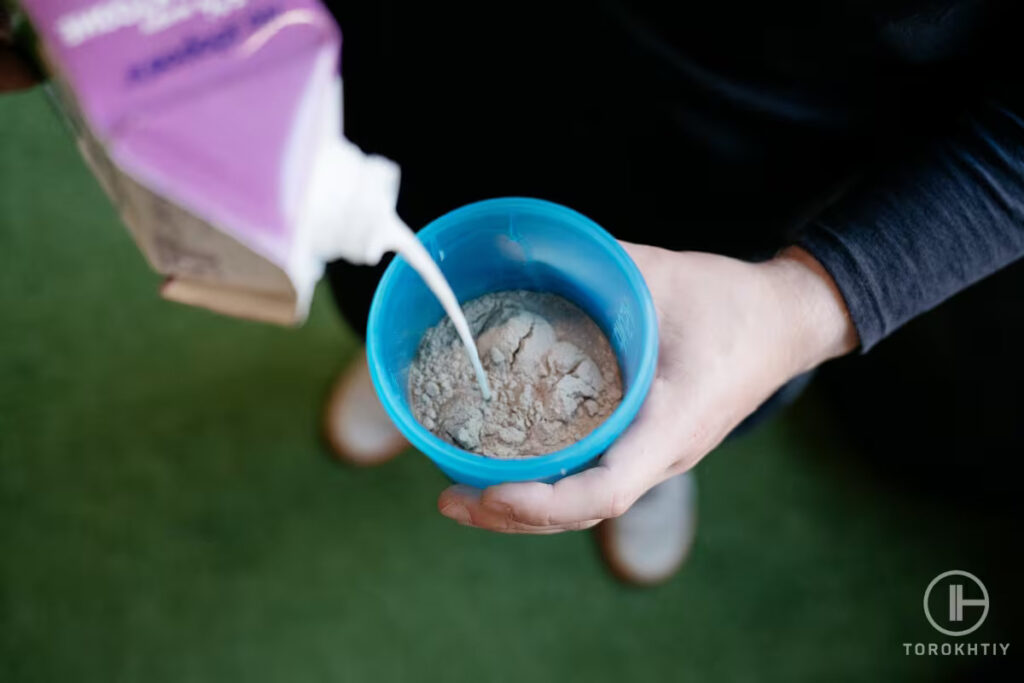
You may prefer water over milk if you’re cutting because milk is relatively high in calories. In this case, consider using a lower-calorie plant-based alternative like oat or almond milk.
While milk will be the go-to for most people, feel free to experiment. Vanilla protein powder is surprisingly tasty when mixed with orange juice. And, as we’ll cover more in-depth later on, mixing protein into coffee works quite well too!
5. Add Additional Ingredients
Another great way to make protein shakes that taste good is to blend your powder up with some additional ingredients. This is especially useful if you’re looking to put on muscle, as it’s an easy way to get some extra calories in.
The main ingredients that work well in a protein shake are bananas, berries, and nut butter. By combining these ingredients with milk and protein powder, you’ll get a delicious, high-calorie, and nutrient-dense shake. While these are some of the best ingredients for improving taste, the only limit here is your imagination.
Avocado can add a pleasant creamy texture to a shake. Mixing in spinach or kale can add a nice boost of nutrition. While oatmeal may lead to a gritty texture, it’s a great way to add in some complex carbs. Seeds are also a great way to get some fats and additional protein. And if you’re looking to maximize calorie intake, make a homemade mass gainer by adding some ice cream. Experiment with different combos to find a shake that works for you!
Here are some options to mix your protein shake with:
• Nut or Seed Butters
Nut or seed butters that use roasted ingredients can add an appetizing aroma and source of healthy fat to the shake.
• Avocados
Avocados offer a neutral flavor and contribute healthy fats and fiber to the mix. Cut the avocado in half and remove the pit. Scoop out the flesh and add it to your blender. Avocados can also be combined with other fruits or vegetables to create a delicious and nutritious smoothie.
Consider adding spinach or kale for an extra dose of greens, or berries for a sweet and fruity flavor. Get creative and experiment with different combinations to find your perfect avocado protein shake!
• Other Fruit and Vegetables
Fruits can add natural sweetness and vegetables can provide additional fiber, antioxidants, vitamins, and minerals without compromising taste.
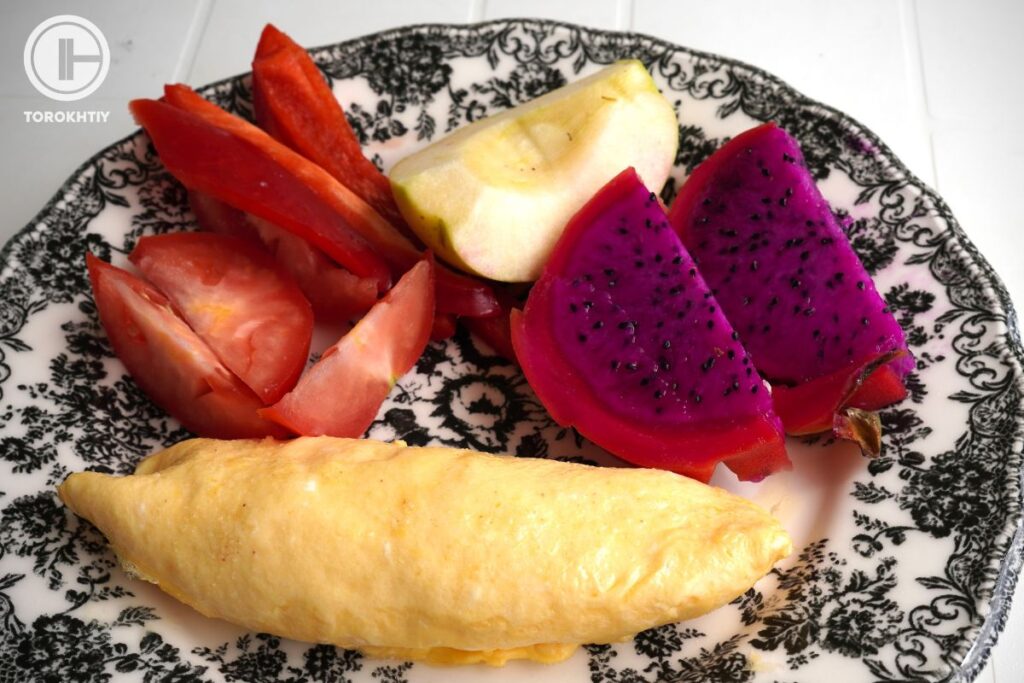
If you have a chocolate protein powder and it is too strong in flavor, a good way for how to make chocolate protein shake taste better would be to balance the more bitter cocoa flavor with a sweeter flavor such as a banana.
• Spices
Spices such as cinnamon or nutmeg can add flavor to your protein powder without adding calories. You can also try adding a dash of vanilla extract or cocoa powder for a richer flavor.
• Sweeteners
If you have an unflavored powder and are wondering how to make unflavored protein taste good, you could add a natural sweetener such as honey or maple syrup.
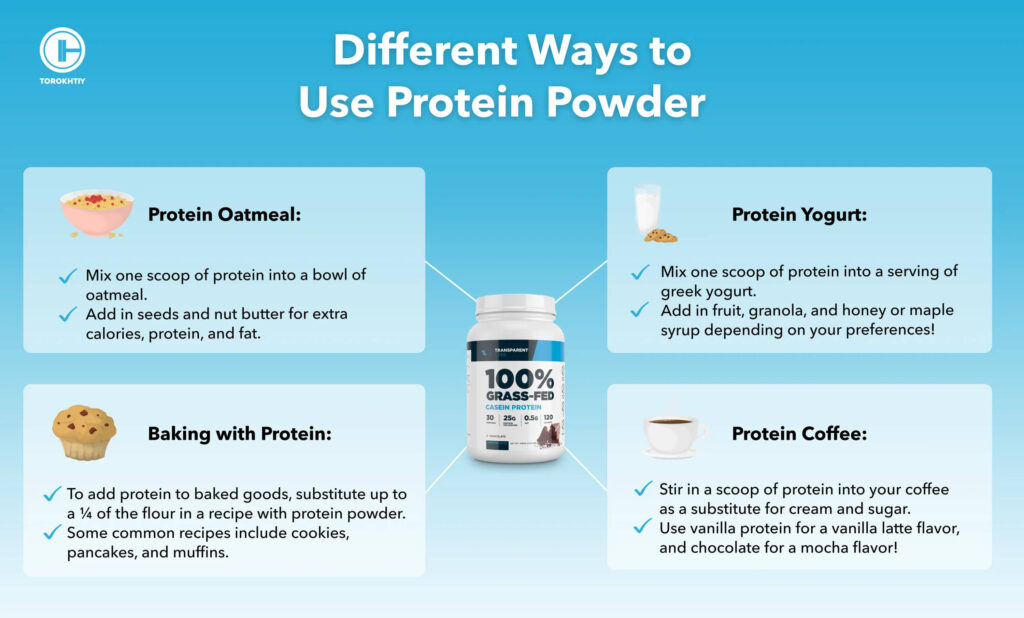
6. Add Ice And Drink The Protein Shake Cold
Another tip that might make a difference is adding some ice to your shake. Because, let’s be honest, does a warm protein shake sound good to anyone? Especially if your protein doesn’t taste great to begin with, a bit of ice can go a long way in masking an unpleasant taste. This tip is especially relevant if you mix your protein with water.
7. Add Protein Powder To Oatmeal
First, an excellent muscle-building meal is oatmeal mixed with protein powder. Oats are associated with all sorts of health benefits, making them a great dietary staple. With oats already being a source of some protein, this can be a super easy and high-protein meal. Especially if you add in some seeds or nut butter as well, this is a perfect recipe for bulking.
As a tip, consider mixing up your protein into a shake before adding it to the oatmeal. This will help ensure your protein is fully mixed and will avoid giving your oatmeal a clumpy texture.
8. Add Protein To Greek Yogurt
Another super easy high-protein meal is mixing a scoop of protein with a serving of Greek yogurt. On top of being a great source of protein on its own, Greek yogurt is also a source of calcium, and B vitamins.
By using unflavored Greek yogurt, this mixture will take on the flavor of whatever protein powder you’re using. Mix in some fruit for an extra bit of nutrition and flavor, and if you’re looking to maximize the calories, try adding some granola too! If the mixture on its own isn’t sweet enough for you, consider adding in some honey or maple syrup as well.
9. Use In Baking
Another excellent use for protein powder is to put it in recipes! This is where a hydrolyzed protein may be best for a softer texture.
One of the most common protein recipe ideas is protein pancakes. But, protein works great in all sorts of different recipes, from cookies to muffins.
Really, with any baking recipe, you can substitute up to ¼ of the flour used with protein powder. Search around for some protein baking recipes if you’re interested! Keep in mind that it will alter the flavor and texture of a recipe, but it also greatly improves the protein content of any baked good.
Our expert Jacek Szymanowski told his secret recipes with protein powder:
“One I’m always having at home – big pack of a protein powder. Delicious Strawberry or Vanilla Ice cream are not only good for protein shakes but I simply add them to pancakes, omelettes or… cheesecakes 😄 Try and thank me later.“
10. Use In Coffee
Finally, a great way to get your protein in alongside some caffeine is to mix it into coffee. Simply stir a scoop of protein into your coffee to make a high-protein drink that rivals what you can get at your favorite coffee shop!
Depending on the flavor of protein you use, there are all sorts of different flavor combos you can achieve. Vanilla will get you a delicious vanilla latte flavor, while chocolate protein will give you a mocha-style drink. While these will likely be the 2 best flavor options, feel free to get creative and try mixing some different flavors. Anyone for banana cream protein coffee?

How Do Different Protein Powders Taste?
Each type of protein will have a slightly different flavor profile. While whey will be the go-to for most people, other options include casein, plant-based, and egg protein. Follow this guide below to determine what protein is right for you.
| Protein Type | Pros | Cons |
|---|---|---|
| Whey Protein | • Smooth texture • Milkshake-like taste • Excellent macros | • Not vegan friendly • Can be quite expensive • Not vegan friendly • Not as much flavor variety as whey |
| Plant-Based Protein | • Vegan friendly • Will have excellent taste & texture if it’s high-quality | • Worse macros and bioavailability than dairy-based protein • Lower quality supplements may not have the best taste/texture |
| Egg Protein | • Dairy-free • Great for baking • Good macro content | • Typically has a poor taste/texture on its own • Is often only sold unflavored |
| Soy Protein | • Complete, standalone vegan protein • Decent texture compared to some other vegan protein sources | • Won’t have as good of a taste/texture as a high-quality vegan blend • Somewhat grainy texture • Low concentration of few amino acids |
1. Whey Protein
Whey protein will be the go-to for the vast majority of people, as you can see by our list being largely ¾ whey supplements. In terms of texture and flavor, whey is as close as you will get to a milkshake when using a protein supplement. This is not only because whey offers excellent macro breakdowns and bioavailability, but because of its flavor and consistency as well.
Whey comes in both isolates and concentrates. The difference here is the ratio of protein to fats and carbs. Isolates will have a concentration of 90%+ protein by calories while concentrates will usually be somewhere around 70-80%.
Concentrates will have a slightly more pleasing taste because of the added fat and carbs, but isolates still deliver an excellent flavor as well. Overall we recommend isolates because of their improved macros.
It’s worth noting that despite being a dairy product, whey isolates are typically considered lactose-free because of how filtered they are. So, if you’re lactose intolerant, you may still be able to handle a whey isolate. Some concentrates are also labeled as lactose free, this is usually achieved not by removing carbohydrates but by breaking down lactose with enzymes as is done for lactose-free milk.
You’ll also be able to find the widest range of flavors with a whey supplement. Some of the whey products on our list have nearly 20 flavors on offer! Overall, there’s a good reason why whey is the most popular type of protein available.
Our expert Sergii Putsov shared his favorite flavors with us:
“Finding a tasty protein powder that aligns with your dietary requirements and pleases your palate is not only an investment in your nutritional routine but also a smart strategy for maintaining consistency in your dietary regimen. The taste and palatability of your chosen protein supplement can have a significant impact on your commitment to consuming it regularly, ultimately helping you meet your protein intake goals with enthusiasm and ease.”
2. Casein
The closest equivalent to whey is casein because it is also a dairy-based protein. It will deliver a very similar taste and texture to whey when mixed with milk.
Casein is commonly referred to as a slow-release because it is processed by our bodies differently than whey. Casein will increase plasma amino acids for around 7 hours, while whey only increases them for around 3. It’s worth noting that this spike is more significant with whey, even though it doesn’t last as long.
Because of this, casein is often recommended as a supplement to take before bed. However, small differences between casein and whey have been found in terms of results on muscle growth.
Similar to whey isolates, casein protein is also considered to be lactose-free. Just keep in mind that casein is also a common allergen.
It’s worth noting that because casein is not nearly as popular as whey, it’s difficult to find as much flavor variety. This is shown by Transparent Labs offering their whey in 12 different flavors, while their casein is only offered in chocolate.
3. Plant-Based Proteins (Pea, Rice, Blends, Etc.)
The majority of plant-based proteins you’ll find are a blend of pea, brown rice, hemp, and other vegan protein sources. Because each of these protein sources has a slightly different taste and texture. Vegan protein powders also have a fairly wide range of flavors, although they typically won’t have as much variety as whey.
While most plant-based protein sources are not complete proteins on their own, most supplement companies combine these to have a complete set of amino acids. Keep in mind that something like brown rice or pea protein on its own will not have enough of all 9 essential amino acids to be classified as a complete protein.
Getting enough of each essential amino acid should be a concern for vegans who may not be getting enough complete protein in through diet alone. While most vegans get enough protein already, if they’re trying to build muscle, a high-quality plant-based protein may be very useful.
While plant-based proteins often get a bad rap for having an unpleasant taste or chalky texture, they have greatly improved over recent years. Especially with a high-quality blend like the one found in Huge Vegan protein there are plenty of delicious options available that rival the taste and texture of whey.
4. Egg Protein
Egg white protein is very commonly sold unflavored, which will not have the most appealing taste when mixed into water or milk on its own. Reviews for egg white protein suggest that it doesn’t mix especially well, leading to a chunky, unpleasant texture. Most people will probably find this type of protein better for baking instead of mixing into drinks.
Because it’s usually unflavored, and often doesn’t have the best taste, we decided not to include any egg proteins on our list. However, some high-quality egg proteins out there still offer excellent macros. So, if you’re interested they aren’t a bad choice!
5. Soy Protein
Finally, soy protein is the vegan protein you’re most likely to see on its own, not as part of a blend. While it will likely have a better texture than standalone brown rice or pea protein, it still isn’t as appealing as a high-quality vegan blend.
Soy, along with hemp, is one of the few standalone complete vegan proteins. This means you won’t have to worry about adding any other sources of essential amino acids, as you’ll get all 9 from soy alone (with 3 in lower doses and significantly lower leucine content compared to whey).
Like many vegan proteins, there may be a somewhat grainy texture, especially when compared to whey. However, if you’re able to find a high-quality soy-based protein, this shouldn’t be a major issue.
Why Does Protein Powder Taste So Bad?
Although protein powder manufacturers strive to create blends with delicious flavors and textures, personal taste preferences can vary widely. As a result, there is a possibility that you may not enjoy the taste of certain flavors or may wish to modify them to achieve a more satisfying experience.
In general, some possible reasons of unpleasant taste are:
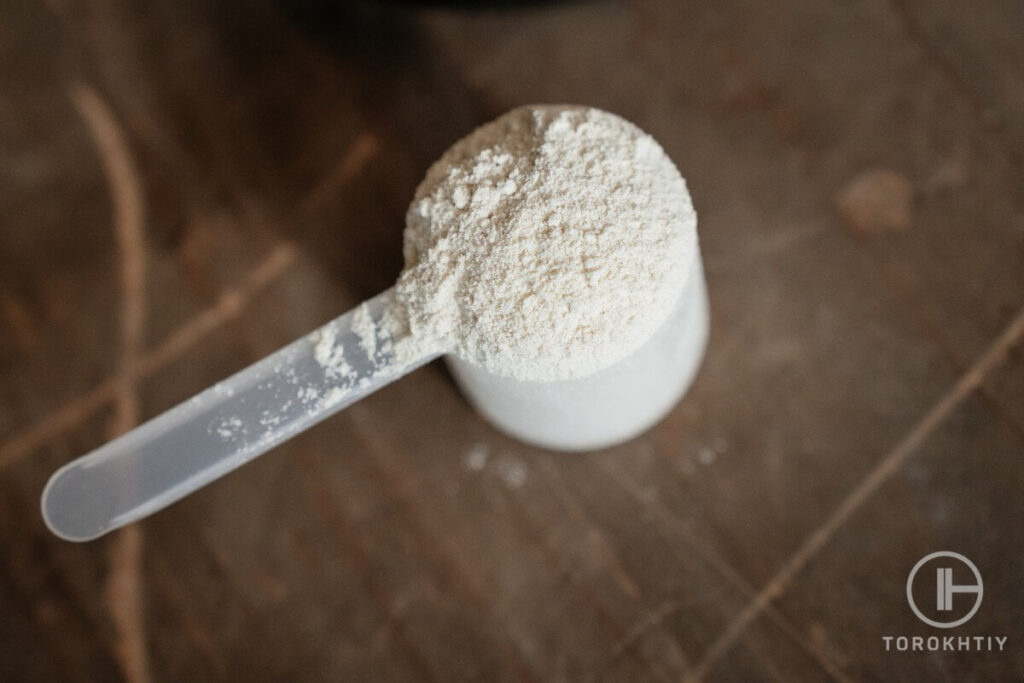
1. Low-Quality Ingredients
Some protein powders may be made with lower quality ingredients, such as low-quality whey protein or artificial sweeteners, which can affect the taste.
2. Unflavored or Unsweetened Powders
Unflavored or unsweetened protein powders tend to have a more bitter taste than flavored powders, which can make them less enjoyable to drink.
3. Rancidity
Depending on the product and other ingredients that may be in them, if there are ingredients that are sources of fat such as seeds, over time these can become oxidized and rancid, which can give the powder a bad taste and smell.
4. Texture
Some powders, typically plant-based protein powders such as pea protein, can be gritty and chalky due to the higher carbohydrate and fibre plant protein sources. The various ‘hacks’ covered above can be helpful if you are wondering how to make pea protein taste better.
How To Find The Best-Tasting Protein Powder?
If you’re on the hunt for a protein powder that actually tastes good, don’t leave it up to chance. Use these 3 guidelines to help make a decision. Before buying, you’ll want to read as many reviews as you can, as well as consider the type of protein you’re buying. However, there’s no substitute for trying protein yourself, so it may take a bit of trial and error before you find one that’s right for you.
1. Read The Reviews
One of the best ways to get a feeling for the taste of a protein powder is to read reviews before buying. After checking out several reviews, you will pick up a general feeling for how well people enjoy the taste of a product.
Although this won’t always be the best metric to go by, check to see if multiple people address the same issue, like graininess or poor mixability. If there are tons of reviews praising the protein’s taste and texture, then it’s probably a high-quality supplement. You can also check to see if any specific flavors are recommended. If many people experience the same thing, it’s likely you’ll notice it too!
Overall, reading reviews is one of the best ways to compare different protein powders on taste, as it offers you an unbiased way to compare multiple supplements.
2. Consider Protein Type
As outlined above, there’s a ton of different protein options available that all offer slightly different flavor profiles. If you’ve only ever tried a certain type of protein, consider branching out to see if you prefer something different.
Of course, if you’re vegan you will be limited to plant-based proteins. However, you can still try different blends and mixtures, especially if you’ve only taken a standalone protein like pea or hemp. Blends will typically have a much richer flavor and smoother texture, making them the best option.
If you’re not vegan, whey will be the go-to for most people. However, you may still find you prefer casein or plant-based protein. You never know until you try!
3. Try A Few Different Options
Because taste is such a subjective thing, there’s no substitute for trying a couple of different options to see which one you like best. While you may luck out and find a protein powder you love right off the bat, you’ll likely need to try a few different options before you find one you really like.
If you’re unsure, consider buying smaller package sizes at first to spend less money trying different supplements. Some brands will even offer their proteins in sample sizes to make this easier! While it may take some trial and error, this process will be more than worth it once you find a protein you love.
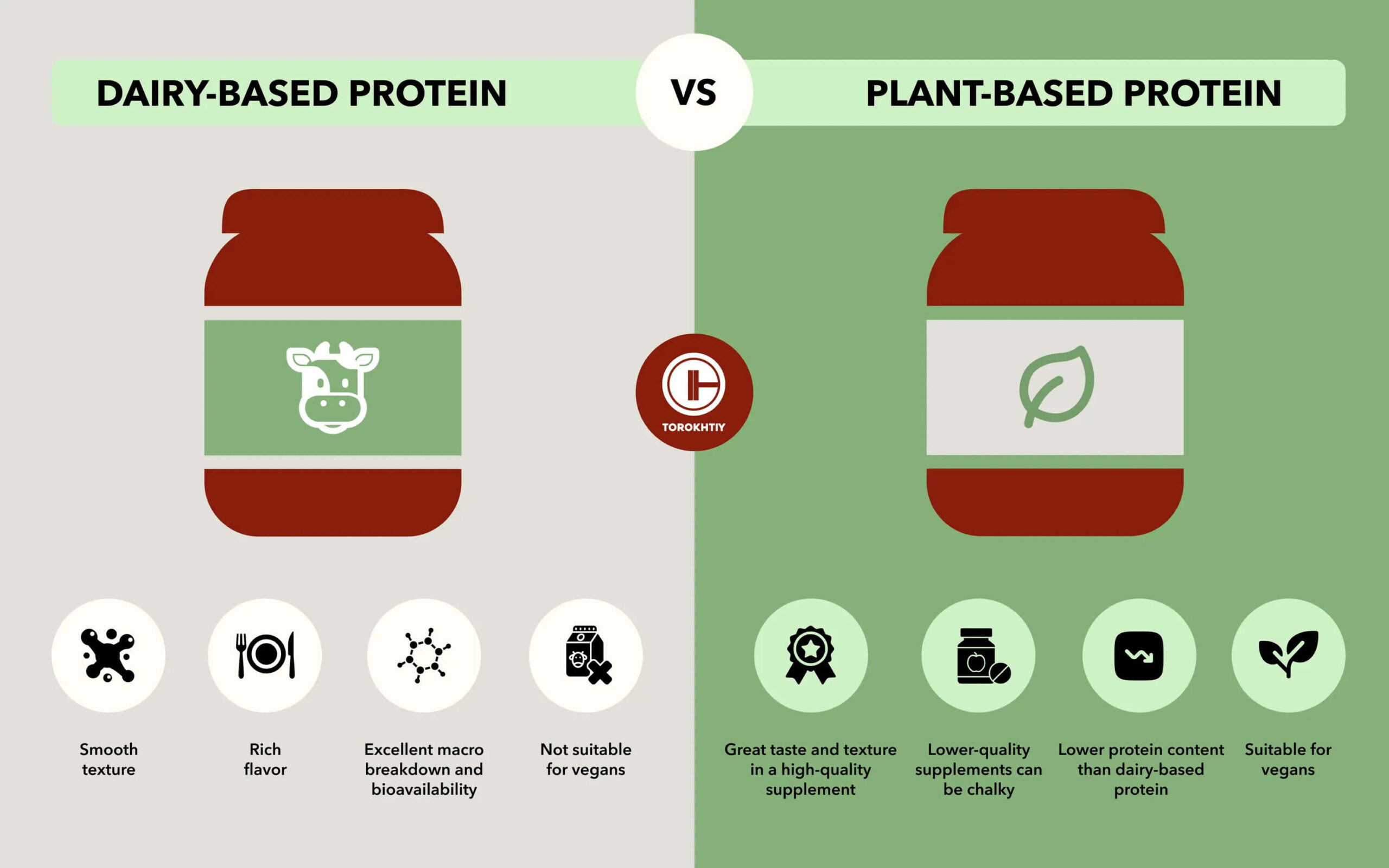
Best-Tasting Organic Vegan Protein Powder
Finding a plant-based protein powder that is both tasty and nutritious can be challenging. While people may prefer plant-based protein sources for ethical, health, or environmental reasons, some find it difficult to enjoy the taste of certain plant-based protein powders.
If you’re having trouble with the taste or texture of your plant-based protein, try the tips above. Alternatively, consider our recommendation: the Transparent Labs Whey Isolate, which is suitable both for building muscle and recovery as it contains 28g protein per 1 scoop serving.
Transparent Labs Grass-Fed Whey Protein
- Serving Size: 32.96g
- Price Per Serving: ~$1.8
- Protein: 28g
- Carbohydrates: 1g (depends on flavor)
- Fat: 0.5g (French Vanilla only)
- Added Sugar: 0g
- Calories Per Serving: 120
- Recommended By Athletes: Hafþór Júlíus Björnsson, Terron Beckham, Paul Sklar
This product is no exception to Transparent Labs’ consistent production of some of the highest-quality workout supplements around.
While whey concentrates typically have richer flavors because of their higher fat and carbohydrate content, this isolate still delivers exceptional flavor – and even better macros.
You’ll be getting 28g of protein in each serving, which is the second-highest protein content on our list. The low carb, fat, and calorie content make this an excellent option for cutting as well.
If you’re after flavor variety, Transparent Labs doesn’t disappoint with 12 unique flavors. These range from classics like milk chocolate and French vanilla to more unexpected options like cinnamon french toast and oatmeal chocolate chip cookie.
Like all Transparent Labs products, this whey isolate also uses no artificial ingredients whatsoever. Instead, it is flavored with stevia and other natural ingredients. This product is also made from grass-fed whey protein, and grass-fed dairy has been shown to be healthier than other forms of dairy.
Finally, this is one of the most expensive products on the market at around $2.00 per serving. But, considering the level of quality you’re getting, this still offers great value for money.

FAQ
Do Protein Shakes Taste Better With Milk or Water?
Whether or not protein shakes taste better with milk or water is subjective to personal preferences and goals. If you prefer a smoother, creamier texture, then milk or milk alternatives can help achieve this meanwhile providing extra calories and protein as well as calcium and vitamin D if the product is fortified.
If you simply need a liquid as a carrier for your protein powder and do not want to add more calories into your day, then water can be a good option. An in-between option could be to mix protein powder with a combination of milk and water to balance the creaminess and calorie count.
It is also possible to choose an unflavoured milk alternative product as these are often low calorie and can still add creaminess to a protein shake.
What Is the Best Thing to Mix With Protein Powder?
Similarly to the above, the “best” ingredients to mix with protein powder depends on your preference and goals.
If you are looking to pack more nutrients into one sitting, then a protein shake could help achieve this by making a smoothie with protein powder and adding more ingredients such as nut butter for healthy fats and fruits for carbohydrates and antioxidants.
You could also add liquid supplements such as liquid vitamin D3 or omega-3 if you find it difficult to get these nutrients in your diet otherwise and prefer liquid forms of supplements. Vitamin D3 is important for bone health and immunity while omega-3 fatty acids have beneficial anti-inflammatory properties.
Keep in mind that some omega-3s have a fishy flavor, which doesn’t go well with a protein shake, but there are neutral flavors available you could choose from.
What Should You Not Mix With Protein?
Some ingredients that should not be mixed with protein powder include acidic and carbonated ingredients. Acidic liquids such as citrus juice can cause the protein to denature and clump together, resulting in a lumpy texture and an unpleasant taste.
Carbonated beverages can cause bloating and stomach discomfort due to the gas that is released when the two are mixed.
Which Tastes Better: Whey Or Casein?
Because whey and casein are both dairy-based protein powders, they will have very similar tastes and textures. They also offer very similar macros, although whey isolates will typically have a slightly higher protein content. With that being said, whey comes in significantly more flavor options, which will make it the go-to choice for most people.
Which Tastes Better: Whey Or Plant Protein?
Plant proteins often get a bad rap for having gritty textures and unpleasant tastes. While plant protein formulas have improved greatly over recent years, they still aren’t as tasty as whey on average. With that being said, a high-quality plant protein powder can compete with whey on factors like taste and texture but whey will be far superior in terms of macros and bioavailability, making it a better choice for most people.
Which Whey Protein Flavor Tastes Best?
This completely comes down to a matter of personal preference. Most people will likely want one of the 2 most basic flavors: chocolate or vanilla. These will be best mainly because of their versatility in different recipes. However, some whey proteins come in nearly 20 different flavors. So, don’t be afraid to experiment and try something different if it sounds good to you!
Conclusion
We explored the reasons you might be wondering, ‘why do protein shakes taste so bad?’ and shared tips for how to make protein powder taste good. We also discussed what to do with protein powder you don’t like and offered suggestions on flavoring for protein shakes.
We’d love to hear your thoughts on how you mix your protein powder and any techniques you’ve used to improve the taste of protein powder that you didn’t enjoy. Do you have an opinion on what the best-tasting protein powder is? Do you prefer whey or plant-based protein? What’s your go-to flavor? Please share your experiences in the comments section below!
20 years of Oly Lifting & Training experience
Orthopedic Clinical Specialist (OCS)
M.Sc.Eng. Biotechnology, Sports Nutritionist

Also read:
- Why Is Protein Powder So Expensive
- How Long Does It Take To Absorb Protein
- Protein Powder vs Amino Acids
- Can You Put Protein Powder in Cereal
- How Long Do Protein Shakes Last
- What Do You Mix Protein Powder With
- Whey Protein vs Isolate
- Best Supplements for Muscle Soreness
- How To Make Protein Shakes Taste Better
References:
- Properties and Therapeutic Application of Bromelain: A Review // Ncbi: https://www.ncbi.nlm.nih.gov/pmc/articles/PMC3529416/.
- Vitamin D and the Immune System // Ncbi: https://www.ncbi.nlm.nih.gov/pmc/articles/PMC3166406/.
- Omega-3 fatty acids in inflammation and autoimmune diseases // Pubmed: https://pubmed.ncbi.nlm.nih.gov/12480795/.
- Michael A. Mortenson “Flavor of whey protein concentrates and isolates” International Dairy Journal, 18(6), 649-657.
- Brad Heins “Grass-fed cows produce healthier milk” https://extension.umn.edu/pasture-based-dairy/grass-fed-cows-produce-healthier-milk (accessed September 18, 2023).
- Sophia Burnett “Protein Powder: The What, Why, & How To Choose” University Health Center
- Jose Antonio “Casein Protein Supplementation in Trained Men and Women: Morning versus Evening” Int J Exerc Sci. 2017; 10(3): 479–486.
- Jooyoung Kim “Pre-sleep casein protein ingestion: new paradigm in post-exercise recovery nutrition” Phys Act Nutr. 2020 Jun 30; 24(2): 6–10.
- Harvard T.H. Chan School of Public Health “Protein” https://www.hsph.harvard.edu/ nutritionsource/what-should-you-eat/protein/ (accessed September 18, 2023).
- Vegan Nutrition “Protein in Vegetarian and Vegan Diets” https://students.dartmouth.edu/health-service/sites/students_ health_service.prod/file s/students_health_service /wysiwyg/protein_ vegetarian_nutrition.pdf (accessed September 18, 2023).
- Harvard T.H. Chan School of Public Health “Oats” https://www.hsph.harvard.edu/nutritionsource/food-features/oats/ (accessed September 18, 2023).
- Harvard T.H. Chan School of Public Health “Oats” https://www.hsph.harvard.edu/nutritionsource/food-features/oats/ (accessed September 18, 2023).
- Harvard T.H. Chan School of Public Health “Yogurt” https://www.hsph.harvard.edu/nutritionsource/food-features/yogurt/ (accessed September 18, 2023).
- Photos by Torokhtiy Media team.
Why Trust Us?
With over 20 years in Olympic weightlifting, strength training, nutrition coaching, and general fitness our team does its best to provide the audience with ultimate support and meet the needs and requirements of advanced athletes and professional lifters, as well as people who strive to open new opportunities and develop their physical capabilities with us.
By trusting the recommendations of our certified experts in coaching, nutrition, and sports training programming, as well as scientific consultants, and physiotherapists, we provide you with thorough, well-considered, and scientifically proven content. All the information given in the articles concerning workout programming, separate exercises, and athletic performance, in general, is based on verified data.
The product testing process is described in more detail here.
Author: Oleksandr Maksymenko
Certified Sports Nutritionist,
MSc Sports Dietetics
Specializing in: Weight management, Fitness / Sports nutrition
Oleksandr is a professional fitness nutritionist certified by the Fitness Professional Association (FPA). He follows the principles of evidence-based dietetics and fosters a healthy relationship with food in his clients, ensuring there are no strict prohibitions on their favorite foods or frequent lapses. His primary goal is not only to achieve results for you but also to sustain them over the long term, all while enjoying tasty and delicious food.
Reviewed by: Jacek Szymanowski
Certified Nutritionist,
M.Sc.Eng. Biotechnology
Performance architect,
Strength and Conditioning Specialist
With over 30 years of fighting experience, specialization in nutrition coaching for athletes, and expertise in metabolic health and dietary strategies, Jacek offers a comprehensive approach to optimizing your performance and well-being. Backed by a Master of Science degree in Biotechnology, Jacek remains at the forefront of scientific advancements, ensuring that his coaching is always evidence-based and up-to-date.




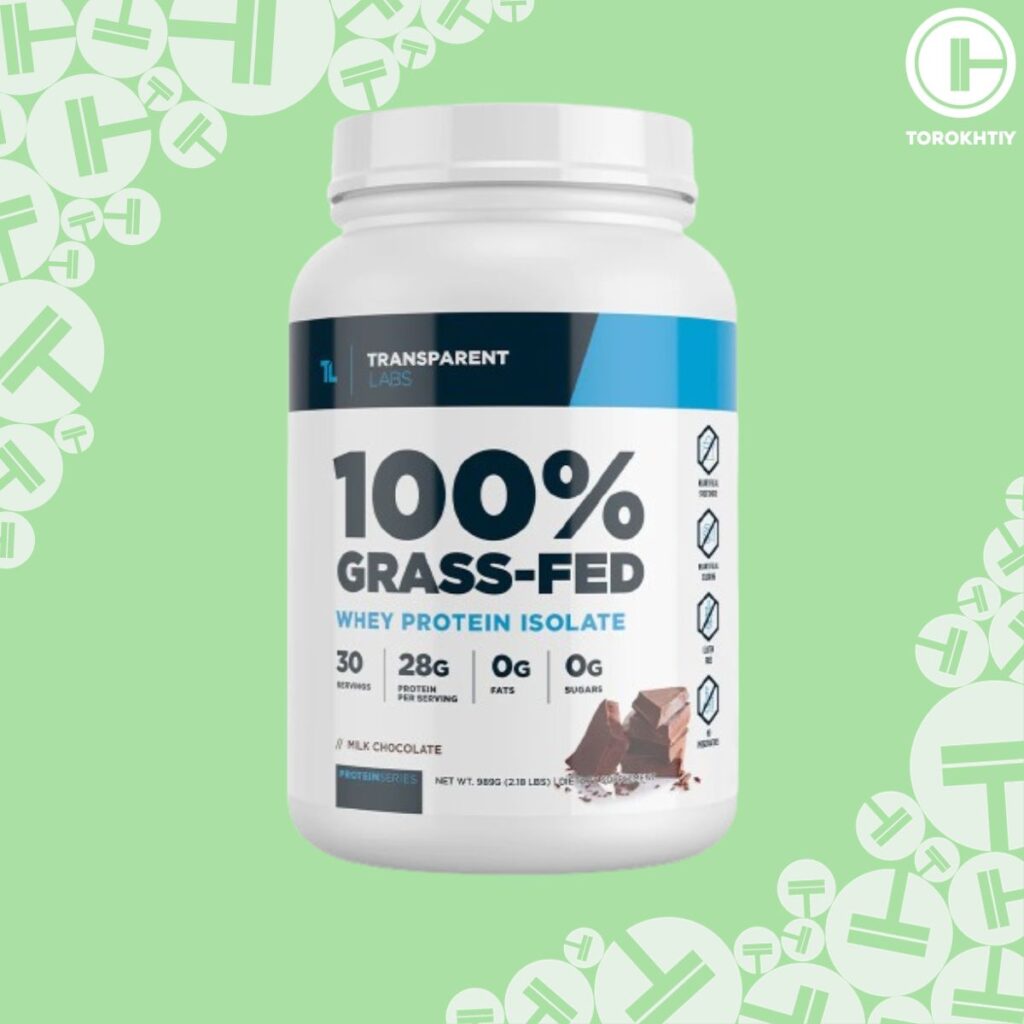



Still have questions after reading our article? Unlock your full potential by engaging with our experts and community! Don’t hesitate — leave a comment below and Oleksandr Maksymenko will provide a personalized answer and insights to help you reach your goals.